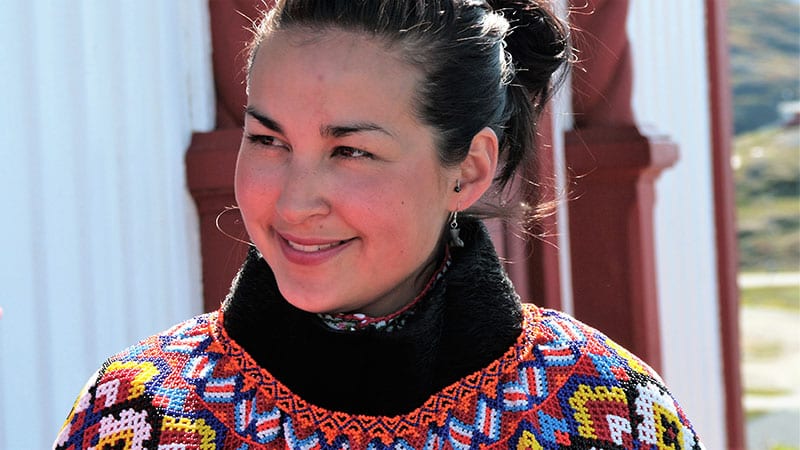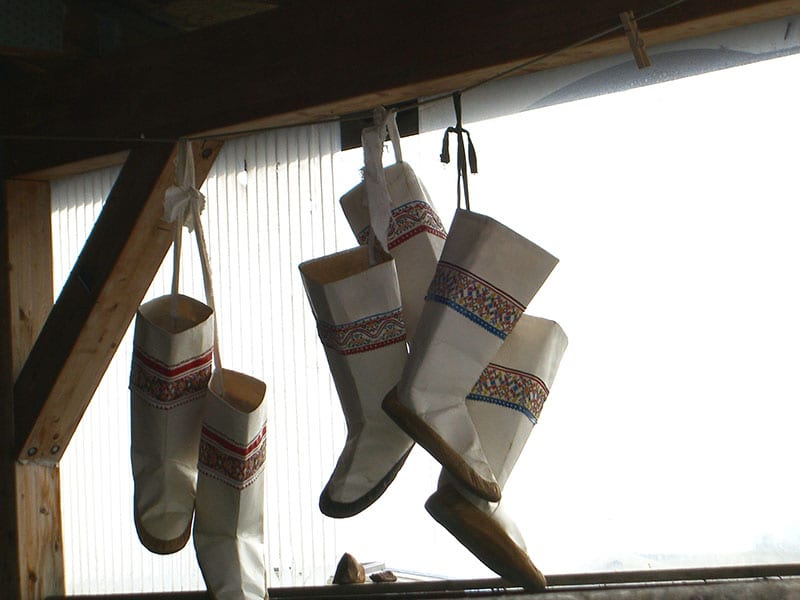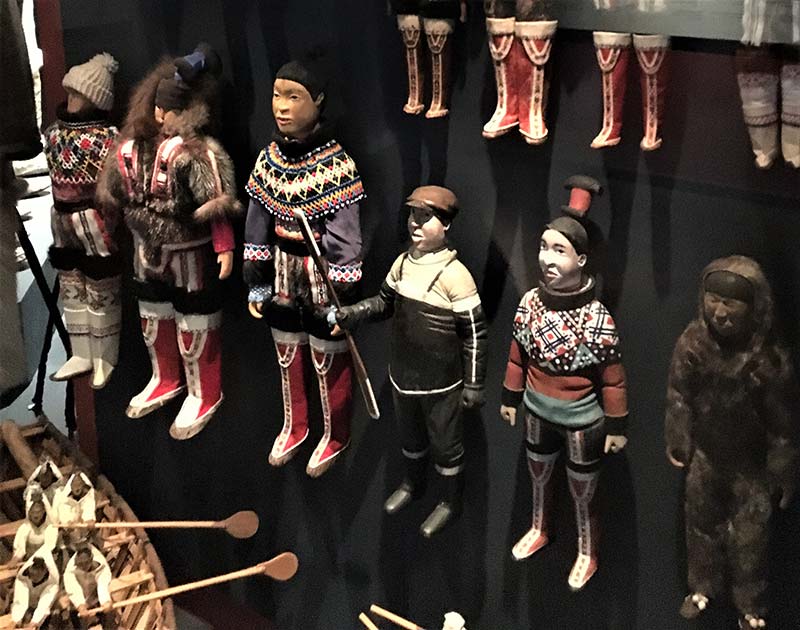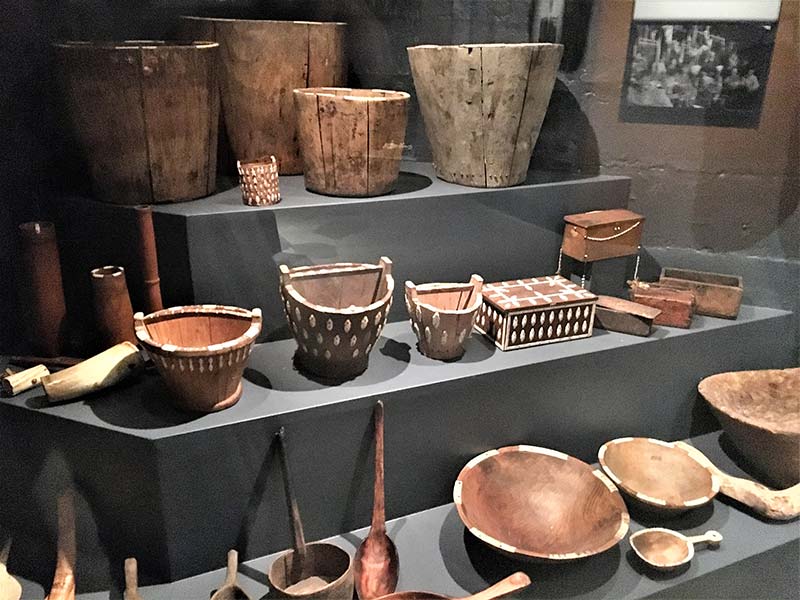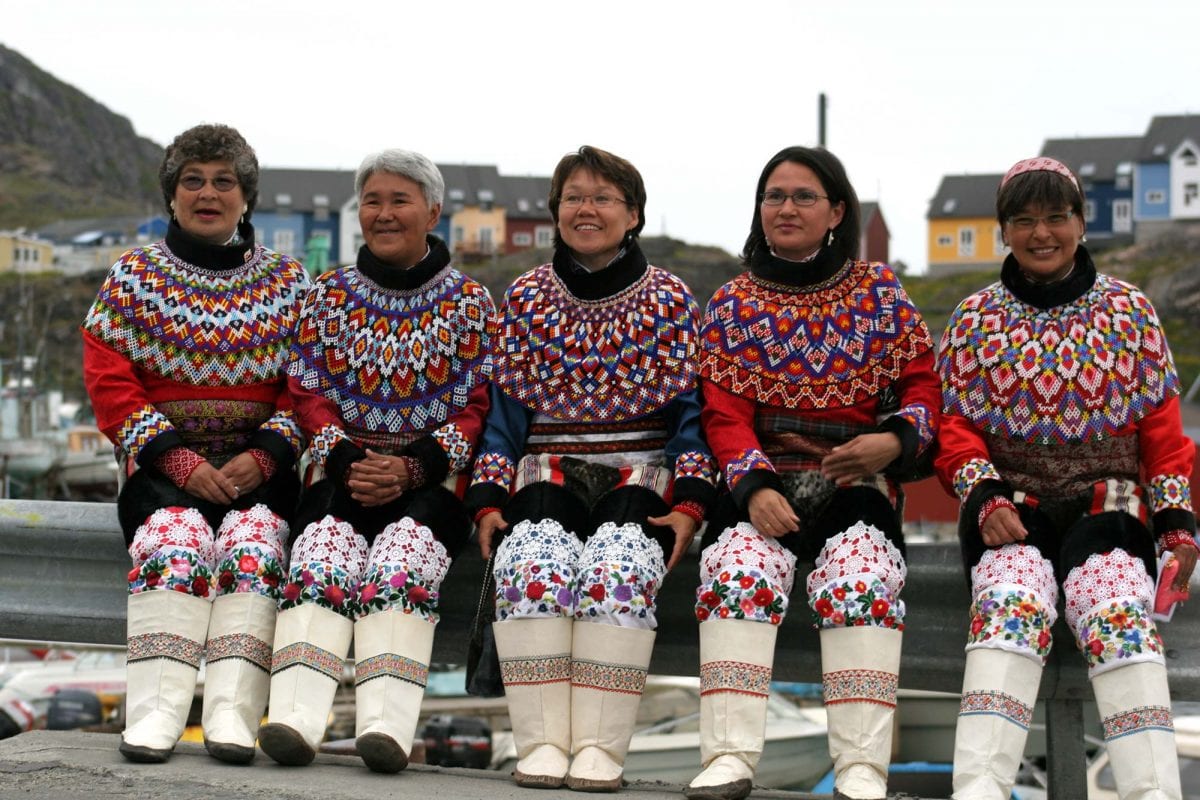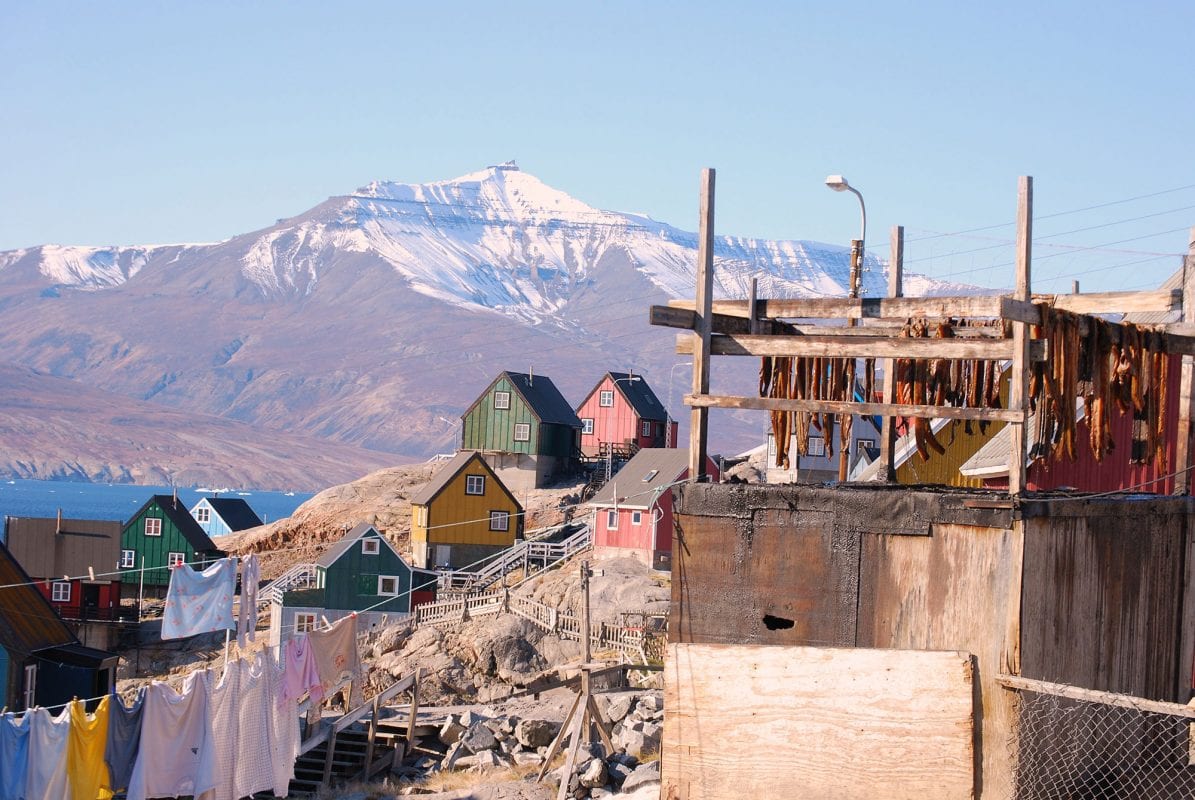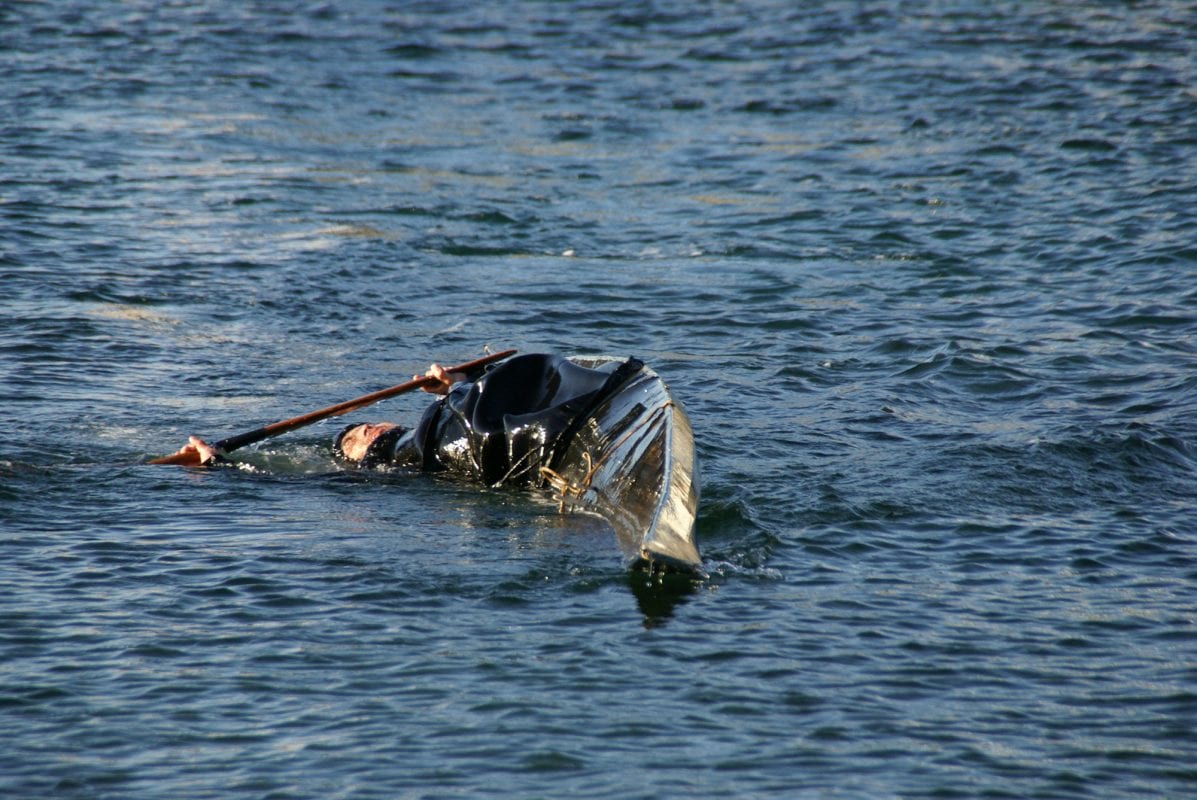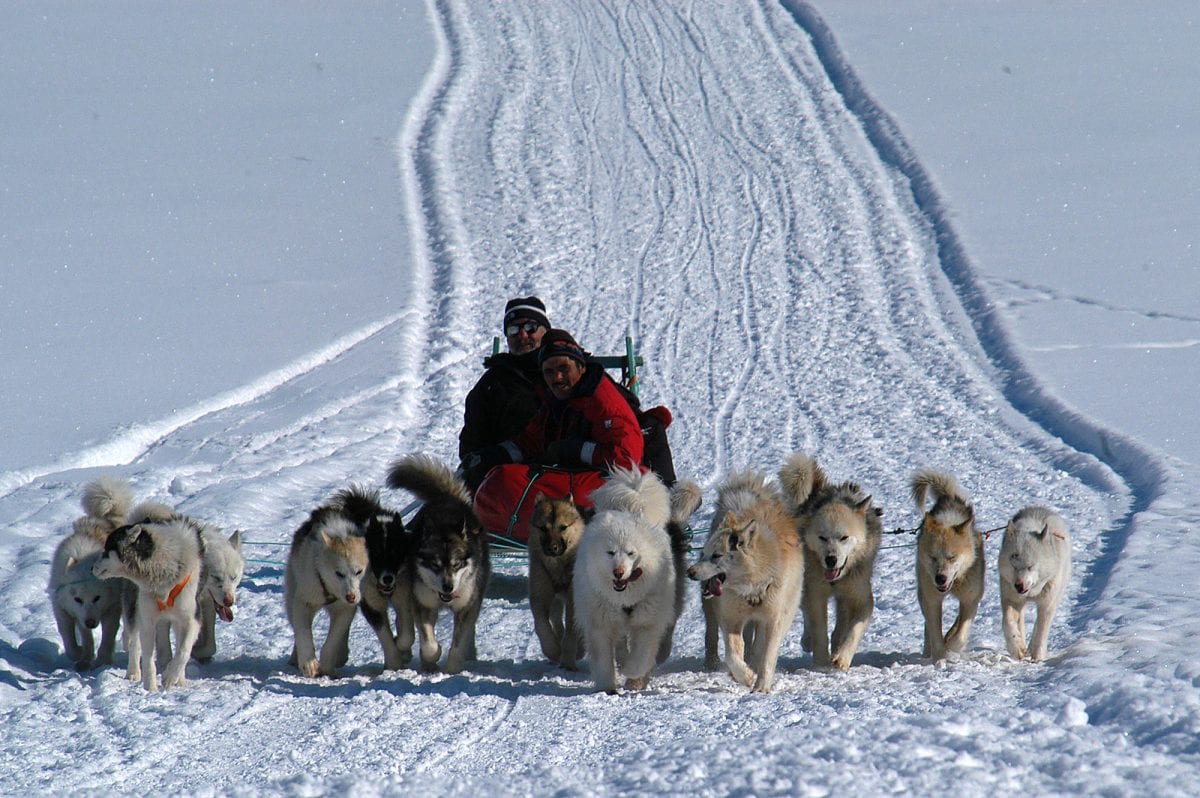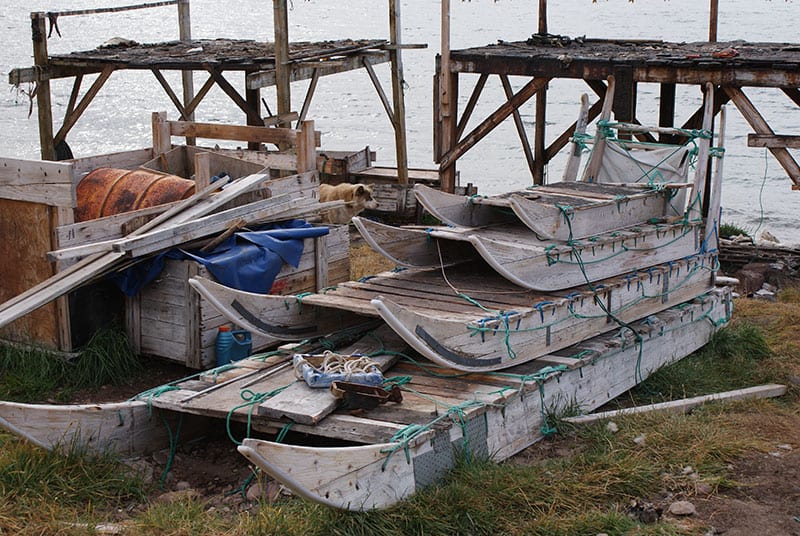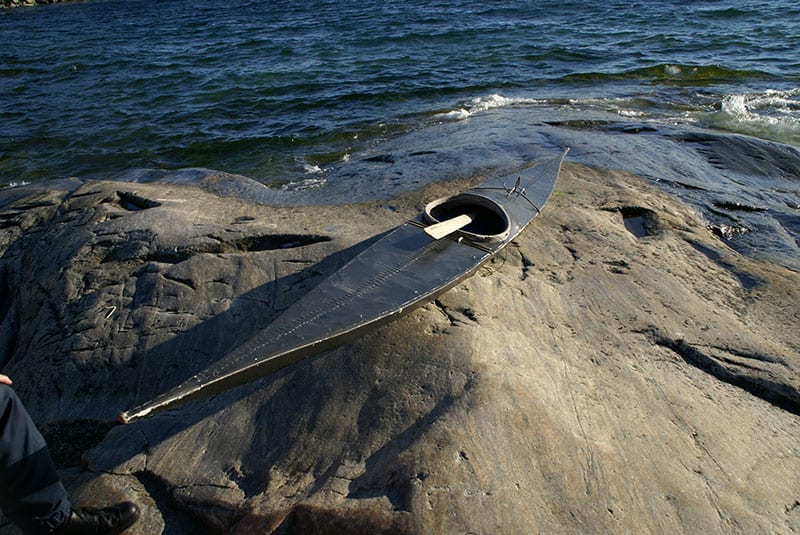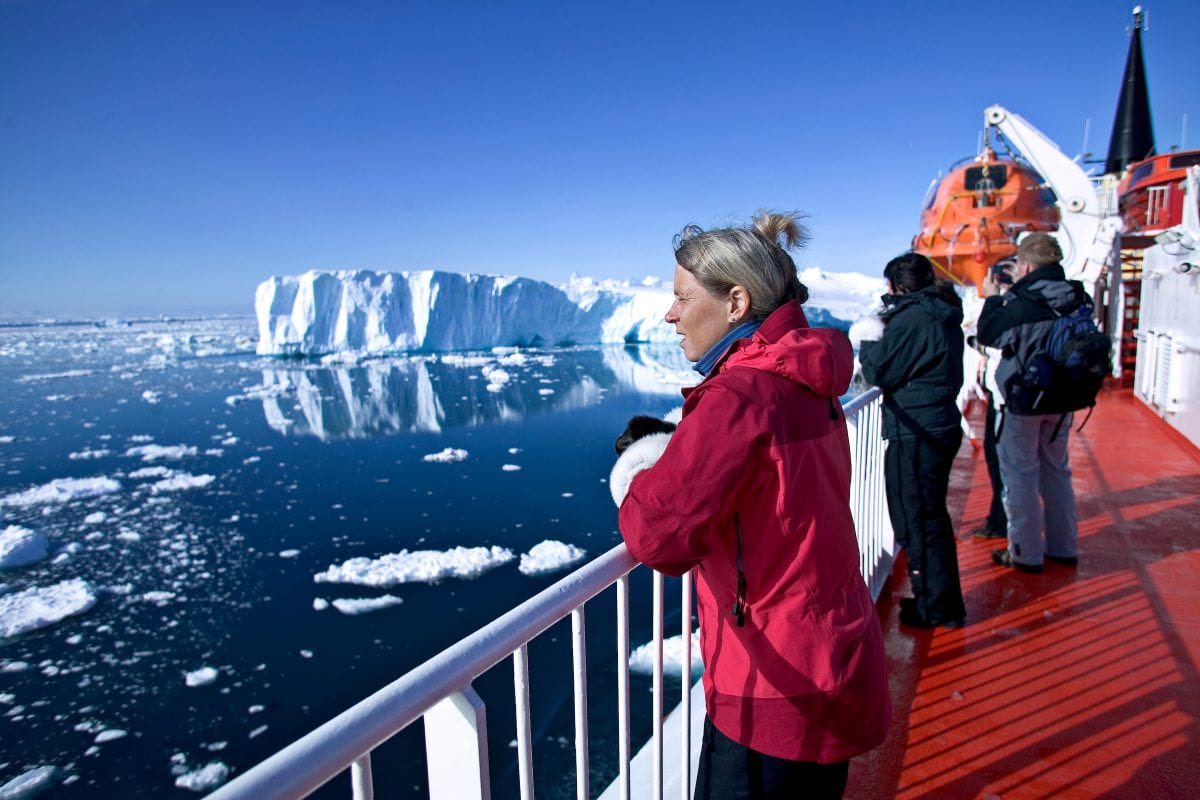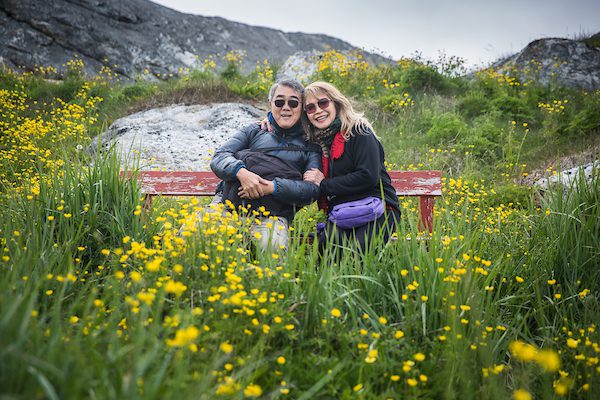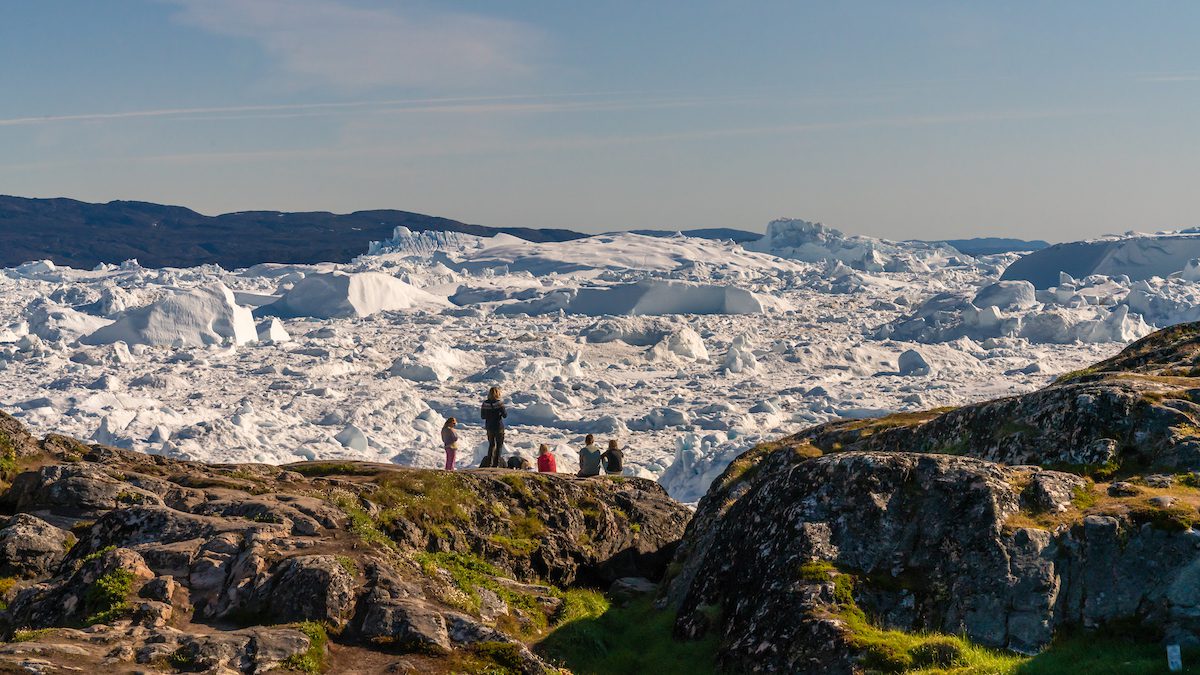Experience life in small settlements
No matter where you are in Greenland, you will see that the traditional hunter’s culture lives side by side with a state-of-the-art modern society. However, in the smaller settlements, you will get a better sense of what it means to live in harmony with nature in a small, isolated community. Here, you will see that the dog sleds are ready for winter, fish are dried on racks, and the hunters’ gear is ready for fishing and hunting.
Dog sledding with locals
If you choose to go dog sled riding in Greenland, you will be greeted by a local driver who knows his dogs and the area inside and out. Greenland is not touristy as such. You will find that you are met by a human being and not a guide whose sole job is to take tourists on excursions. The local drivers do not necessarily speak English, but using short sentences, laughter, and body language, think of this as part of an authentic experience.
Coffee in a private home
In several towns in Greenland, you can go to a so-called “Kaffemik,” a get-together with coffee, with a local family or a women’s organization. This is a variation on the typical kaffemiks of Greenland. As a traveler, it is a great opportunity to talk to the locals and hear about life in Greenland and exchange experiences and, not least, laugh together.
A traditional kaffemik is an “open house” with coffee, tea, and lots of cake. People come and go, and they make sure not to overstay their welcome, as people literally come and go all day. At the end of the day, dozens and dozens – if not hundreds – of people have dropped by.
Worship and Christianity
Christianity is our main religion. Actually, it is a state religion, and in all towns and villages, you will find a church. There is a service on Sundays, and if you are lucky, you may experience confirmation, a baptism, or a wedding. On such occasions, people are often dressed in the national costume. You are welcome to enter the church at these services. Remember to ask nicely if you would like to take a picture.
Greenland’s National Day is June 21
If you are in Greenland on June 21, you can look forward to happy celebrations. National Day is celebrated throughout the country by Greenlanders, often wearing national costumes at parades and services. In many places, you will find an open house with a Greenlandic buffet. If the weather allows for it, these celebrations are held outdoors.
